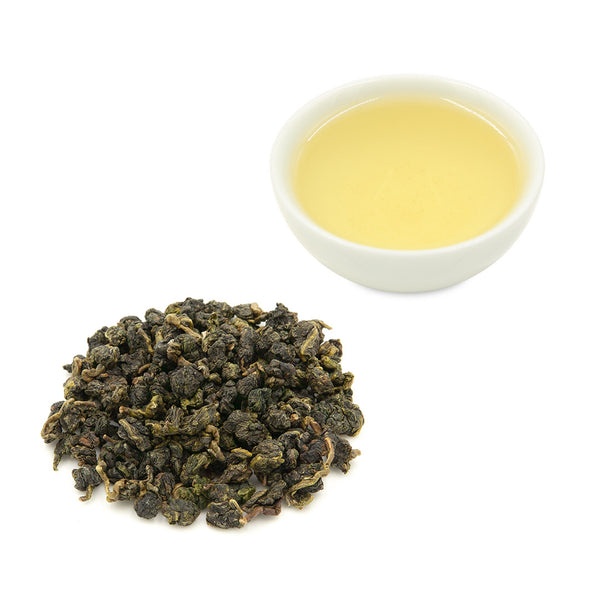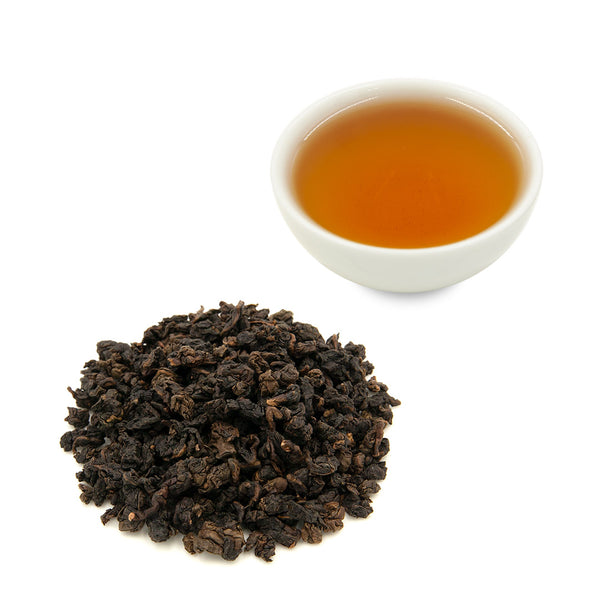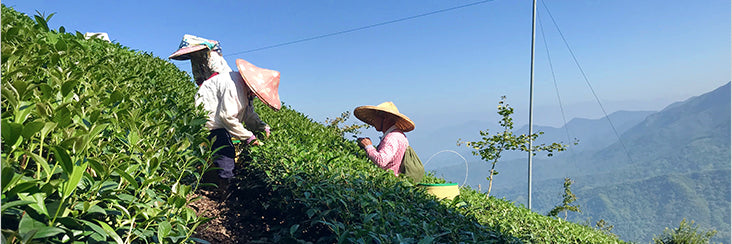
Taiwan's Top 10 Most Famous Teas
Taiwan is known to make to some of the finest teas in the world, particularly in the Oolong Tea category. Yet, Taiwanese teas are not all widely recognized or understood by name. To help folks out, we've prepared the following overview of what we think is Taiwan's top ten most famous teas.
Taiwan's Top 10 Most Famous Teas
-
Oriental Beauty Oolong Tea

Workers harvesting Shanlinxi High Mountain Oolong Tea.
High Mountain Oolong Tea
High Mountain Oolong refers to any tea that is grown over 1000m elevation, and processed as a lightly oxidized, unroasted Oolong Tea. There are famous place names within this category that represent geographic growing regions. These include: Alishan, Shanlinxi, Li Shan, and Dayuling. Virtually all High Mountain Oolong Tea in Taiwan is made with the Qing Xin Oolong cultivar.
Flavor: Fresh, floral, vegetal, and pastry notes. Smooth, substantial composition. Lasting finish. Invigorating.
Alishan High Mountain Oolong Tea.
Harvesting High Mountain Teas can be quite a challenge given the steep terrain the tea is grown in. Check out how they do it in this video here:
Video showing a tea harvest in Taiwan's highest-elevation tea growing region.
Jin Xuan "Milk" Oolong Tea
Jin Xuan, also called Tai Cha #12, is a hybrid cultivar that has become increasingly popular since its inception in 1980's by Taiwan's Tea Research and Extension Station (TRES). It is a hardy, high yielding strain that is very versatile both in its cultivation and processing. Jin Xuan is mostly grown in Nantou and Chiayi Counties, but it can now be found all over Taiwan and beyond.
Flavor: Mildly sweet, buttery aroma. Delicate vegetal notes, with a smooth milky character. Pleasant, creamy aftertaste.
Dong Ding Oolong Tea
Dong Ding, or "Frozen Peak" is the name of a mountain in Lugu Township, and now represents a traditional processing method, using the original Qing Xin Oolong cultivar that migrated from Mainland China.
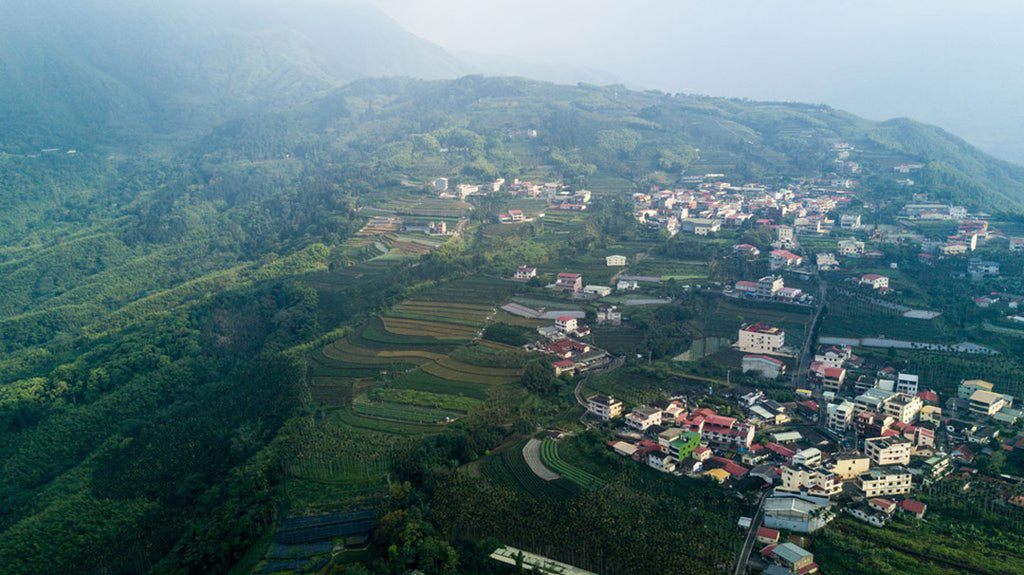 Historical Dong Ding Oolong Tea growing villages in Lugu Township, Nantou County Taiwan.
Historical Dong Ding Oolong Tea growing villages in Lugu Township, Nantou County Taiwan.
Dong Ding Oolong is the most popular traditionally made tea in Taiwan. It's distinctive qualities result from medium levels of both oxidation and roasting.
Flavor: Rich, complex aroma. Full-flavored, fruity/roasted character. Heady, long-lasting finish.
Video showing how Traditional Dong Ding Oolong Tea is made in Taiwan.
Oriental Beauty (Bai Hao Oolong) Tea
Oriental Beauty is the name that was given to this type of tea by the Queen of England. Bai Hao (white fur) Oolong is the name that is locally used to refer to this tea, based on the harvesting and processing methods.
The leaves are harvested very young, when they still have their protective fur. The fully processed leaves are slightly curled, and multi-colored. The leaves are heavily oxidized, to the point of resembling a Black Tea in character. A true batch of Oriental Beauty is only produced when the new leaf growth has been affected by the Green Leafhopper. This "bug bitten effect" results in a distinct honey essence in both the aroma and the flavor profile.
Flavor: Rich, fruit compote character with a dry heady finish. Distinctive honey notes (if bug bitten).
Sun Moon Lake Black Tea
Tea cultivation in the Sun Moon Lake area dates back to the Qing Dynasty (17-1800's) when Chinese settlers began cultivating the naturally occurring wild tea tree. In the early 1900's, the Japanese colonists developed large scale Black Tea production using the Assam strain here, following the British model in India. The pre-existing wild tea strain naturally cross-bred with an Assam strain.
 The Sun Moon Lake Tea growing region in Nantou County, Taiwan.
The Sun Moon Lake Tea growing region in Nantou County, Taiwan.
Taiwan's TRES spent 50 years refining this hybridization before it was publicly registered in 1999 as Tai Cha #18. In 2003, was given the name Red Jade at the 100 year anniversary of the TRES, and honored as a Taiwanese specialty tea.
Flavor: Complex bouquet of clove, cinnamon and mint in both fragrance and flavor profile. Dry, refreshing finish.
Wenshan Baozhong Tea
Baozhong's distinctive character results from the leaves only being slightly curled after the tumble heating/cease oxidation stage, then dried. This allows the leaves to maintain more of their structural integrity, both visually and in terms of the chemical compounds within the leaf. This preserves the original, fresh green leaf character.
Flavor: Fresh herbal aroma. Balanced, floral and buttery vegetal notes. Clean, fragrant aftertaste.
This freshness is complemented by a substance of flavor and a distinct aromatic profile that puts Baozhong in a class of its own. It is easily distinguished from its Green Tea cousins, but also stands clearly apart from High Mountain Tea as an unroasted Oolong.
Tie Guan Yin Oolong Tea
One step in particular sets traditionally made Tie Guan Yin (Iron Goddess of Mercy) apart from the processing methods of other Oolong types. After the "kill green" or "cease oxidation" step —where the leaves are exposed to high heat, they are partially rolled and dried, and then put in the roasting oven while still in the cloth wrapped balls shown above, and slightly "steamed in their own juices".
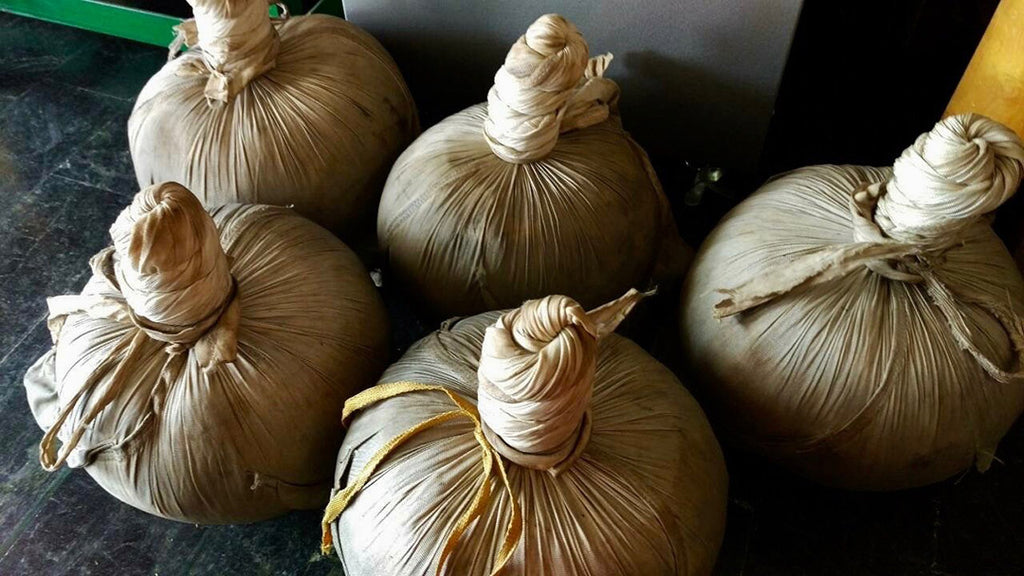 Tea leaves tightly wrapped into cloth balls in the rolling and drying process of Tie Guan Yin Oolong.
Tea leaves tightly wrapped into cloth balls in the rolling and drying process of Tie Guan Yin Oolong.
This results in a subtle, tangy fermented character that makes Tie Guan Yin unique. This anomaly of traditional tea making in Taiwan, combined with heavy oxidation and heavy roasting give Tie Guan Yin Oolong its bold, rich and distinguished character.
Flavor: Hearty, dried fruit aroma. Rich, tangy, toasted grains flavor. Smooth, soothing finish.
Tsui Yu "Jade" Oolong Tea
The name Jade Oolong comes from its registered name in Taiwan as Tsui Yu, or Tai Cha #13. It's a hybrid strain that was developed by the Taiwan Research and Extension Station at the same time as Jin Xuan/Tai Cha #12, aka Milk Oolong. Jade Oolong is appreciated for its distinct herbal/floral character in its flavor profile.
Flavor: Fresh, herbal aroma. Green leafy character, mildly sweet. Refreshing flowery finish.
Jade Oolong is now becoming increasingly rare however, as a result of the popularized Four Seasons Spring strain that offers a much higher yield than Jade Oolong, and also has a very prominent floral character when made as a "Green Oolong", i.e. a lightly oxidized, unroasted tea.
Four Seasons Spring Oolong Tea
Around 1981, a Muzha tea farmer in Taipei County discovered a naturally occurring hybrid oolong in his tea garden that proved to be particularly suitable to the climate in Taiwan. Since then, it has gained popularity for its prolific produce and unique flavor and character. Now it is cultivated extensively as a signature oolong tea that is unique to the island of Taiwan.
The name Four Seasons Spring was chosen for the plant’s prolific year-round leaf growth, allowing for at least four harvests annually that produce a fresh, fragrant character of tea that is unique among oolongs.
Flavor: Sweet, creamy aroma. Balanced, mild sweet/dry character. Delicate floral aftertaste
Sanxia Bi Luo Chun Green Tea
Sanxia is a historical tea growing region just outside of Taipei, where Bi Luo Chun Green Tea is produced. An heirloom strain of tea known as Qing Xin Gan Zai (青心柑仔) is mostly cultivated here for the production of this Green Tea.
Like its predecessor in mainland China that was a precious tribute tea to the emperor, very young leaves are harvested to make Bi Luo Chun. The appearance of the slim, gently curled leaves is a vibrant green color, with ample fur in tact on the leaf buds. We wrote a blogpost that describes in detail what is involved in sourcing Bi Luo Chun Green Tea.
Flavor: Fresh, stimulating wheatgrass and subtle seaweed notes. Delicate, yet distinct garden fresh finish.
See where Bi Luo Chun Green Tea is grown and produced in Taiwan.
Conclusion
So there you have it — Taiwan's most famous teas explained in a nut shell. Please feel free to post any questions you may have in the comments below, as well as share your own knowledge and experience of the teas we introduced here! Exploring these teas is not just about taste—it’s a way to connect with Taiwan’s vibrant tea heritage and the artistry behind each cup.
What are your favorite Taiwan teas?
Try These Teas Yourself!
Want to try some of the teas mentioned above? Taste for yourself the broad spectrum of flavors that have made Taiwan famous for its specialty teas in our Taiwanese Tea Sampler!
The Taiwanese Tea Sampler is a great way to taste Taiwan's famous teas.
LET US KNOW!
We really want to know what you think! Leave your impressions or questions in the comment section below!
SUBSCRIBE!
If you enjoyed this post and would like to hear more about the specialty tea industry here in Taiwan, follow us on YouTube, Facebook, and Instagram and please subscribe to our newsletter. Subscribe now and get $5 off your first order!



